Community Safe

How can individuals contribute to the safe management of hazardous chemicals in their community ?
The article outlines various ways individuals can contribute to the safe management of hazardous chemicals in their community. It emphasizes the importance of education, staying informed, taking action, prevention and preparedness, and community collaboration. Individuals are encouraged to research common hazardous chemicals, identify potential health effects, monitor local news, attend public meetings, report leaks and spills, support strict regulations, participate in cleanup efforts, implement safe practices at home, create an emergency plan, build partnerships, and encourage transparency. By taking these steps, individuals can play a crucial role in ensuring the safe management of hazardous chemicals within their communities.
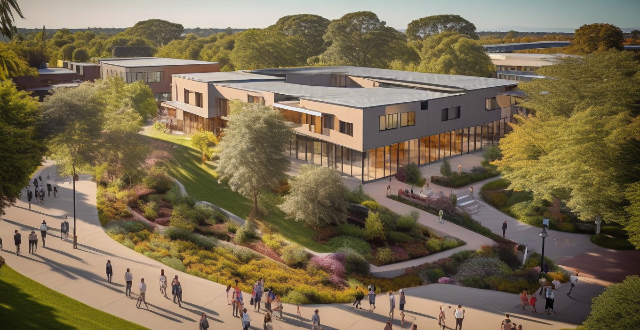
How can immigrants effectively integrate into a new community ?
Effective integration of immigrants into a new community involves learning the local language, engaging with the community, embracing cultural differences, building a support network, seeking out resources, and being patient and persistent. These strategies can help immigrants communicate effectively, find employment opportunities, understand the culture, make friends, and navigate the legal processes involved in immigration.

What role do sports clubs and community centers play in promoting public health initiatives ?
Sports clubs and community centers significantly contribute to public health efforts by offering programs and services that encourage physical activity, provide educational opportunities, build social support networks, target specific demographics, and collaborate with health organizations. These establishments play a crucial role in promoting healthier lifestyles through their facilities, workshops, group activities, youth and senior programs, and partnerships with hospitals and awareness campaigns. By catering to diverse age groups and interests, sports clubs and community centers help foster a culture of health and wellness within communities.

How can we involve community members in climate adaptation planning ?
Community engagement is crucial for successful climate adaptation planning. To involve community members, identify and engage stakeholders, develop a stakeholder engagement plan, use multiple channels of communication, involve community members in decision making, provide training and education, foster partnerships and collaboration, and monitor and evaluate progress. By doing so, you can create a more resilient community that is better prepared for the impacts of climate change.

How does PPE contribute to creating a safe work environment ?
PPE's Role in Creating a Safe Work Environment Personal Protective Equipment (PPE) is vital for establishing a safe work environment by providing a physical barrier between workers and potential hazards, reducing the risk of injuries and illnesses. PPE contributes to safety in various ways, including preventing direct contact with hazardous substances, reducing exposure to harmful agents, providing physical support and protection, enhancing visibility and awareness, promoting compliance with regulations, encouraging responsible behavior, and contributing to ergonomic well-being. By implementing and maintaining the use of PPE, employers can significantly reduce the number of work-related injuries and illnesses, creating a safer and more secure work environment for all employees.

How can we measure the effectiveness of community climate adaptation efforts ?
Measuring the effectiveness of community climate adaptation efforts is crucial for understanding their impact on resilience to climate change. Key steps include setting clear objectives, developing relevant indicators, collecting and analyzing data, transparent reporting, evaluating success, iterative improvement, community engagement, and policy alignment. By following these steps, communities can ensure their adaptation efforts are effective and continuously improved.
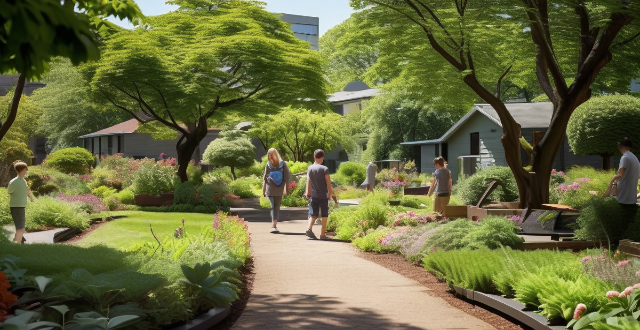
What role do community gardens play in city greening efforts ?
Community gardens play a significant role in city greening efforts by providing environmental, social, economic, and urban planning benefits. These gardens improve air quality, enhance biodiversity, and promote soil health. They also foster community building, offer educational opportunities, and contribute to health promotion. Economically, community gardens provide food security and create job opportunities. Integrated into urban planning, they beautify cities and promote sustainable development. Overall, community gardens are vital for ecological health and improving residents' quality of life.

How do I know if my home canned foods are safe to eat ?
How do I know if my home canned foods are safe to eat? When it comes to home canned foods, safety is of utmost importance. Here are some tips on how to ensure that your canned food is safe to eat: 1. Check the expiration date: Always check the expiration date printed on the can before opening it. If it has expired, it should not be consumed. 2. Look for signs of spoilage: When you open a can of food, look for any signs of spoilage such as mold, discoloration, or off-odors. If you see any of these signs, discard the can immediately. 3. Use proper storage: Canned foods should be stored in a cool, dry place away from direct sunlight and heat sources. Make sure the lid is tightly closed and secure to prevent air from entering the can. 4. Follow proper canning techniques: If you are new to canning, it is important to follow proper canning techniques to ensure safety. This includes using sterile jars and lids, heating the food to at least 180°F (82°C), and allowing the food to cool completely before storing it in the refrigerator or pantry. 5. Read labels carefully: Labels on canned foods provide important information about ingredients, nutritional content, and storage instructions. Make sure to read them carefully before consuming the food. By following these tips, you can ensure that your home canned foods are safe to eat. Remember that even if you follow all of these guidelines, accidents happen sometimes; therefore, always be aware of potential hazards and take appropriate precautions when handling food.

How do sports events promote social interaction and community building ?
Sports events play a significant role in promoting social interaction and community building. They bring people together, foster a sense of belonging, and create opportunities for individuals to connect with one another. This is achieved through encouraging participation, building community spirit, providing entertainment and recreation, facilitating networking opportunities, and enhancing diversity and inclusion. By bringing people together around a shared passion for sports, these events create lasting connections and positive experiences that extend far beyond the playing field.

In what ways do women's empowerment initiatives contribute to community development ?
Women's empowerment initiatives are crucial for community development as they address gender inequalities and foster inclusivity. These initiatives benefit not only women but also have a positive ripple effect on the broader community, leading to more sustainable and equitable growth. Economic growth is achieved through increased participation in the workforce, entrepreneurship and innovation, and improved household economics. Social development is promoted through health and well-being, education, and gender equality. Political empowerment is enhanced through increased participation in decision-making and promotion of good governance. Environmental sustainability is ensured through resource management and climate action. Cultural preservation and exchange are enriched through artistic expression and cultural exchange. Women's empowerment initiatives are essential for comprehensive community development, addressing gender inequalities, promoting inclusivity, and paving the way for sustainable growth, social cohesion, and a brighter future for all members of the community.

What are the key factors in designing a safe and stable building structure ?
The text provides a comprehensive overview of the key factors that must be considered when designing a safe and stable building structure. It emphasizes the importance of site selection and analysis, foundation design, structural system selection, material selection, and construction quality control in ensuring the well-being of inhabitants and protecting against natural disasters. The text also highlights the need for proper workmanship, inspections, testing, and maintenance to maintain the integrity of the structure over time. Overall, the text serves as a valuable resource for architects, engineers, and builders involved in the design and construction of safe and stable buildings.

How do sports initiatives support community health and wellbeing in cities ?
Sports initiatives in cities are crucial for promoting physical activity, social interaction, mental health, and overall quality of life. The collaboration between the International Olympic Committee and PATH is a prime example of how these initiatives can make a significant impact on community health. By increasing access to health-enhancing community sport activities, sports initiatives support physical activity, enhance social interaction, improve mental health, raise awareness about health issues, and contribute to economic impact and urban development. These initiatives are valuable investments for city planners and policymakers as they promote community health and wellbeing in urban areas.

What are some successful examples of sports-based community development initiatives ?
Sports-based community development initiatives have been successful in various parts of the world, bringing people together and fostering a sense of community. Some notable examples include Sport for Social Impact, Right to Play, Sport and Recreation Victoria, and Sport England. These organizations use sports to tackle social challenges such as poverty, gender inequality, lack of education, and physical inactivity. Their programs range from soccer games promoting peace in Israel and Palestine to after-school programs teaching life skills in areas affected by war, poverty, and disease. These examples demonstrate the power of sports-based community development initiatives to bring people together, promote health and well-being, and address social challenges.

How can we raise awareness about the importance of community climate adaptation ?
To raise awareness about the importance of community climate adaptation, several strategies can be employed: 1. **Education and Outreach Programs**: Conduct workshops, engage schools, collaborate with media outlets, and develop informational materials to educate people about climate change and its implications. 2. **Community Engagement Initiatives**: Encourage public participation in discussions, foster partnerships with local organizations, and promote civic leadership to drive climate adaptation efforts. 3. **Visual Aids and Creative Approaches**: Use art, performances, exhibits, infographics, and other creative means to communicate the importance of climate resilience. 4. **Online Platforms and Social Media**: Leverage digital tools like social media campaigns, online forums, virtual reality experiences, and interactive apps to reach a wider audience. 5. **Policy Advocacy and Support**: Advocate for favorable policies, provide financial incentives, and support legislation that enhances community resilience against climate change.

What role do sports organizations play in fostering community engagement and participation ?
The text discusses the role of sports organizations in fostering community engagement and participation. It highlights their contributions in various areas including community building, educational outreach, economic impact, and social responsibility. Sports organizations promote social interaction by offering memberships, organizing events, and providing volunteer opportunities. They enhance diversity and inclusion through inclusive policies, adaptive sports programs, and cultural celebrations. In terms of educational outreach, they promote health and wellness through fitness programs, workshops, and school collaborations. They also develop life skills such as leadership, character development, and career opportunities. Sports organizations stimulate local economies by hosting tournaments and events, promoting sports tourism, and creating jobs. They support local businesses through partnership programs, community marketplaces, and merchandise sales. Additionally, sports organizations demonstrate social responsibility by adopting green initiatives, planning eco-friendly events, launching educational campaigns, organizing fundraising events, having athlete ambassadors, and offering matching gift programs. Overall, sports organizations play a crucial role in building social connections, enhancing diversity and inclusion, providing educational outreach, stimulating local economies, and embracing social responsibility.

Can sports be used as a tool for social change and community development ?
This text discusses the potential of sports as a tool for social change and community development. It highlights how sports can break down barriers, promote health and well-being, and contribute to education and personal development. The article also explores how sports can address social issues, empower communities economically, and promote peace and reconciliation. However, it emphasizes the need for equitable resource allocation, accessibility, and sustainability to fully realize the potential of sports in societal transformation.
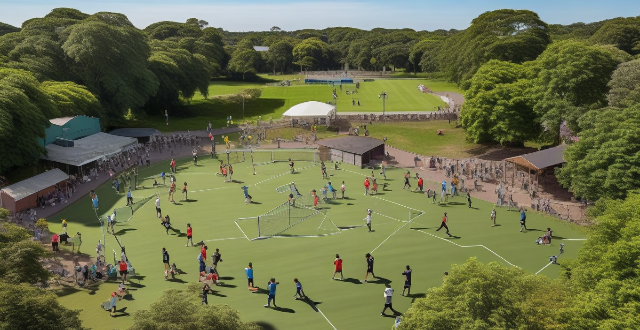
What impact does sports have on the social cohesion and community spirit in rural areas ?
The article discusses the impact of sports on social cohesion and community spirit in rural areas. Sports bring people together, promote teamwork, and create a sense of belonging that can strengthen the fabric of a community. The article explores how sports build social capital by forming friendships and encouraging civic engagement. It also highlights how sports promote teamwork and cooperation by teaching communication skills and collaboration towards a common goal. Finally, the article emphasizes how sports create a sense of belonging within a community by supporting local teams and participating in community events. Overall, sports have a significant impact on rural communities and contribute to their overall well-being.
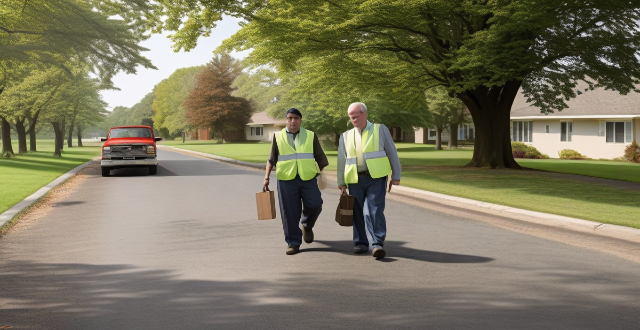
How can we improve road safety in our community ?
Road safety is a crucial aspect that requires collective efforts from all stakeholders. Here are some ways to enhance road safety: education and awareness, infrastructure improvements, enforcement of laws, technological advancements, community involvement, and collaboration with stakeholders. By implementing these strategies, we can create a safer environment for everyone.

How can I gauge the level of parental involvement and community support at a school ?
Gauging the level of parental involvement and community support at a school is crucial for parents when choosing an educational institution for their child. This can significantly impact a student's academic performance and overall development. To gauge these factors, parents can observe school events, talk to other parents, and research the school's reputation. When observing school events, parents should attend open houses, sports games/concerts, and volunteer opportunities to assess the turnout and engagement of parents during these events. A high turnout and active participation suggest strong parental involvement and community support. Parents can also connect with other parents through social media groups, PTA meetings, school drop-off/pick-up times, and school events to ask about their experiences regarding parental involvement and community support at the school. Asking about their level of involvement, supportiveness of the school, communication channels, and impact on student performance can provide valuable insights. Researching the school's reputation online through reviews, rankings, news articles, social media, forums, and message boards can also help gauge parental involvement and community support. Analyzing historical data such as enrollment trends, fundraising results, alumni success rates, and school surveys/feedback can further indicate the level of these factors over time. In conclusion, gauging the level of parental involvement and community support at a school involves attending school events, talking to other parents, and researching the school's reputation. By doing so, parents can make informed decisions about choosing the right school for their child that fosters a supportive and engaging environment conducive to academic success and overall development.

How can sports clubs and teams collaborate with local authorities to support community development projects ?
This topic discusses how sports clubs and teams can collaborate with local authorities to contribute to community development projects. It outlines steps such as understanding the local landscape, building partnerships, implementing projects, and evaluating impact. The text emphasizes the importance of mutually beneficial initiatives and clear communication channels between stakeholders. It also provides examples of project implementation, such as youth mentorship programs and community clean-up days. Finally, it stresses the need for continuous evaluation and improvement to ensure effective use of resources and ongoing community benefit.

How can cultural fusion be promoted within multicultural communities ?
Promoting Cultural Fusion in Multicultural Communities emphasizes the importance of understanding and valuing diversity, fostering dialogue and exchange, promoting inclusion and equity, supporting cultural preservation and innovation, implementing policies and practices, and building partnerships and collaborations. These strategies aim to create a community where diverse cultures are celebrated and respected, leading to a richer and more innovative community life.

How can sports clubs or teams provide a supportive community for mental health ?
The text discusses the importance of mental health in overall well-being and how sports clubs or teams can play a significant role in providing a supportive community for individuals dealing with mental health challenges. The author lists several ways in which sports clubs can create such an environment, including promoting open communication, creating a safe space, building a sense of belonging, offering opportunities for growth, encouraging physical activity, fostering resilience and coping skills, partnering with professionals, and educating on mental health awareness. The text emphasizes that sports clubs have a unique opportunity to provide a supportive community for mental health by taking these steps and contributing significantly to the overall well-being of their members.

How can we promote cultural diversity in our community ?
Promoting cultural diversity is crucial for fostering understanding and respect among people from different backgrounds. To achieve this, we can organize cultural events, promote multicultural education, encourage intercultural dialogue, support local businesses owned by diverse individuals, increase diverse representation in media, and promote cultural exchange programs. By embracing these strategies, we can create an inclusive and harmonious society where everyone feels valued and respected.

How do sports organizations ensure they are inclusive and respectful of cultural differences among athletes ?
Sports organizations play a crucial role in promoting inclusivity and respecting cultural differences among athletes. This is achieved through various means, such as implementing anti-discrimination policies, providing cultural education and training, encouraging diversity in coaching and leadership roles, acknowledging cultural celebrations and holidays, providing resources for cultural integration, creating safe spaces for open dialogue, partnering with community organizations, and monitoring and evaluating progress.

What role do schools play in promoting child safety education ?
Schools play a crucial role in promoting child safety education. They create awareness through classroom instruction, assemblies, and workshops on topics like internet safety and emergency preparedness. Practical application is emphasized through drills, simulations, and field trips with safety guidelines. Physical safety measures include secure campuses and safe playgrounds. Emotional and mental health support is provided through counseling services and peer support programs. Family involvement is encouraged through parent-teacher conferences and information sharing. Community partnerships with local law enforcement and emergency service workshops enhance safety education. Safety topics are integrated into the curriculum through cross-curricular teaching and service learning projects. Clear policies and consistent procedures ensure everyone knows how to respond in emergencies. Resource allocation prioritizes safety equipment, training, and updating facilities. Overall, schools collaborate with families and community partners to effectively prepare children for potential risks and protect themselves in various situations.
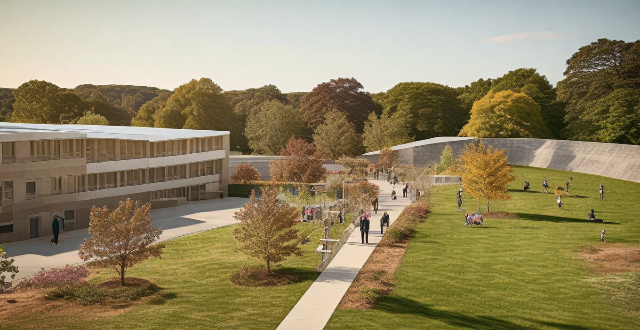
How can schools implement safe reopening plans while managing the risk of COVID-19 transmission ?
This document outlines a comprehensive plan for schools to safely reopen amid the COVID-19 pandemic. Key strategies include implementing health screenings and periodic testing, enhancing hygiene and sanitation measures, mandating mask use, improving ventilation, reducing class sizes, adjusting schedules, limiting gatherings, adopting hybrid learning models, supporting technology use, modifying curricula, engaging in community partnerships, setting clear expectations for students and parents, training staff, providing mental health resources, tracking data, establishing feedback mechanisms, being adaptable to policy changes, and preparing emergency response plans. The guide emphasizes the need for constant vigilance, flexibility, and collaboration to ensure a safe learning environment for all.

How can we build climate resilience in our communities ?
Climate resilience is essential for community sustainability and well-being. Building it involves education, sustainable infrastructure, ecosystem conservation, economic strategies, community engagement, and research. Efforts must be collective across all sectors to achieve a resilient and sustainable future.

How do I find cycling routes that avoid traffic ?
Cycling is a great way to exercise and explore, but sharing the road with vehicles can be dangerous. To ensure a safe ride, it's important to find cycling routes that avoid traffic. Some tips include using online mapping tools like Google Maps or Strava, checking with local cycling groups, looking for dedicated bike infrastructure, and planning your route ahead of time. By following these steps, you can enjoy a safe and enjoyable ride without worrying about traffic.